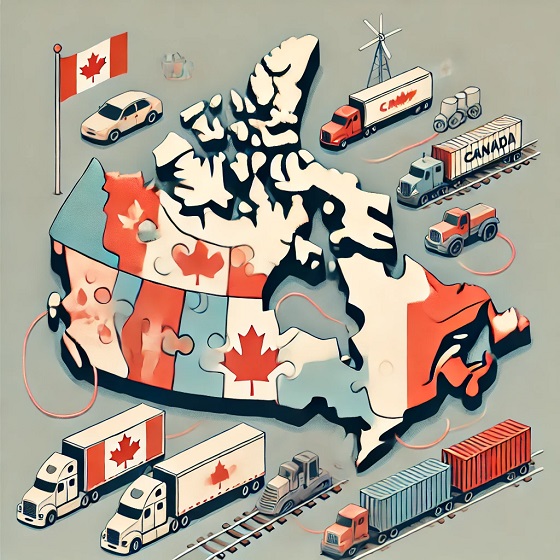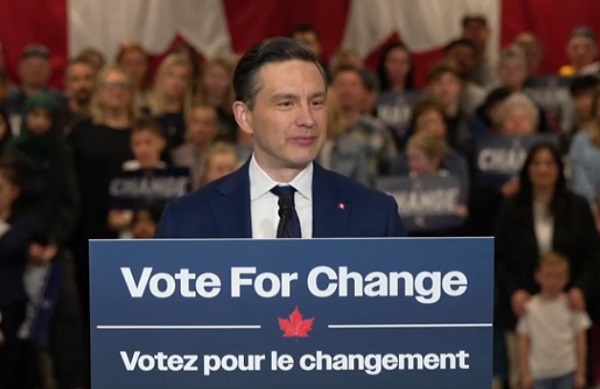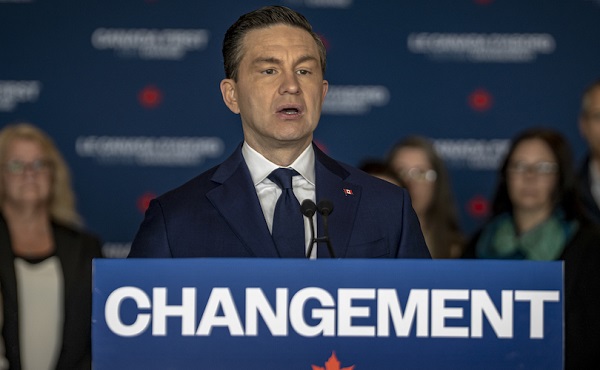Business
Vance, Elon criticize judge for blocking DOGE from Treasury Department

“J.D Vance” by Gage Skidmore, licensed by CC BY-SA 2.0.
 MxM News
MxM News
Quick Hit:
Vice President JD Vance and Elon Musk criticized a federal judge’s decision to block DOGE officials from accessing the Treasury Department’s payment system, calling it an overreach of judicial power. The ruling temporarily halts political appointees’ access to financial data, intensifying tensions between the White House and the judiciary.
Key Details:
- U.S. District Judge Paul Engelmayer issued an order barring DOGE officials without security clearances from accessing Treasury payment systems through at least next Friday.
- Vance called the ruling “illegal,” arguing that judges cannot interfere with executive power, while Musk called for Engelmayer’s impeachment.
- The lawsuit, filed by 19 Democratic state attorneys general, is one of many legal challenges to the Trump administration’s government overhaul efforts.
Diving Deeper:
Vice President JD Vance and billionaire Elon Musk are pushing back against a federal judge’s decision to block the Department of Governmental Efficiency (DOGE) from accessing the Treasury Department’s payment system, calling the ruling a violation of executive authority.
The temporary injunction, issued by U.S. District Judge Paul Engelmayer, an Obama appointee, restricts DOGE officials—including political appointees and special government employees—from accessing the Treasury’s payment infrastructure unless they have proper background checks and security clearances. The judge cited concerns that the administration had overstepped legal boundaries in granting access to sensitive financial data.
Vance, in a social media post Sunday, accused the judge of unlawfully interfering in executive matters. “Judges aren’t allowed to control the executive’s legitimate power,” he said. Musk followed with more pointed remarks, calling for Engelmayer’s impeachment and arguing that the ruling was politically motivated.
The lawsuit, brought by 19 Democratic state attorneys general, is part of a broader legal effort to block President Trump’s aggressive attempts to cut federal spending and restructure government operations. So far, multiple courts have placed temporary holds on various White House initiatives, including a buyout program for federal employees and a workforce reduction at USAID.
Critics of Vance and Musk’s response argue that the administration should follow legal protocols rather than attacking the judiciary. Former Transportation Secretary Pete Buttigieg dismissed their criticisms, saying, “In America, decisions about what is legal and illegal are made by courts of law. Not by the Vice President.” Former Rep. Liz Cheney also weighed in, stating that the administration’s recourse is through the appeals process, not by undermining the courts.
Musk has defended DOGE’s role at the Treasury Department, stating that the changes his team proposed were necessary to improve financial oversight and ensure accurate reporting of government spending. He claimed that Treasury and DOGE “jointly agreed” on new reporting requirements and emphasized that longtime career government employees were implementing them.
The legal battle is still in its early stages, with a hearing scheduled for Friday to determine whether the judge’s temporary order should be extended. Meanwhile, Trump signaled that DOGE would soon shift focus to the Education Department and military spending, setting the stage for further clashes with the judiciary.
Business
It Took Trump To Get Canada Serious About Free Trade With Itself

From the Frontier Centre for Public Policy
By Lee Harding
Trump’s protectionism has jolted Canada into finally beginning to tear down interprovincial trade barriers
The threat of Donald Trump’s tariffs and the potential collapse of North American free trade have prompted Canada to look inward. With international trade under pressure, the country is—at last—taking meaningful steps to improve trade within its borders.
Canada’s Constitution gives provinces control over many key economic levers. While Ottawa manages international trade, the provinces regulate licensing, certification and procurement rules. These fragmented regulations have long acted as internal trade barriers, forcing companies and professionals to navigate duplicate approval processes when operating across provincial lines.
These restrictions increase costs, delay projects and limit job opportunities for businesses and workers. For consumers, they mean higher prices and fewer choices. Economists estimate that these barriers hold back up to $200 billion of Canada’s economy annually, roughly eight per cent of the country’s GDP.
Ironically, it wasn’t until after Canada signed the North American Free Trade Agreement that it began to address domestic trade restrictions. In 1994, the first ministers signed the Agreement on Internal Trade (AIT), committing to equal treatment of bidders on provincial and municipal contracts. Subsequent regional agreements, such as Alberta and British Columbia’s Trade, Investment and Labour Mobility Agreement in 2007, and the New West Partnership that followed, expanded cooperation to include broader credential recognition and enforceable dispute resolution.
In 2017, the Canadian Free Trade Agreement (CFTA) replaced the AIT to streamline trade among provinces and territories. While more ambitious in scope, the CFTA’s effectiveness has been limited by a patchwork of exemptions and slow implementation.
Now, however, Trump’s protectionism has reignited momentum to fix the problem. In recent months, provincial and territorial labour market ministers met with their federal counterpart to strengthen the CFTA. Their goal: to remove longstanding barriers and unlock the full potential of Canada’s internal market.
According to a March 5 CFTA press release, five governments have agreed to eliminate 40 exemptions they previously claimed for themselves. A June 1 deadline has been set to produce an action plan for nationwide mutual recognition of professional credentials. Ministers are also working on the mutual recognition of consumer goods, excluding food, so that if a product is approved for sale in one province, it can be sold anywhere in Canada without added red tape.
Ontario Premier Doug Ford has signalled that his province won’t wait for consensus. Ontario is dropping all its CFTA exemptions, allowing medical professionals to begin practising while awaiting registration with provincial regulators.
Ontario has partnered with Nova Scotia and New Brunswick to implement mutual recognition of goods, services and registered workers. These provinces have also enabled direct-to-consumer alcohol sales, letting individuals purchase alcohol directly from producers for personal consumption.
A joint CFTA statement says other provinces intend to follow suit, except Prince Edward Island and Newfoundland and Labrador.
These developments are long overdue. Confederation happened more than 150 years ago, and prohibition ended more than a century ago, yet Canadians still face barriers when trying to buy a bottle of wine from another province or find work across a provincial line.
Perhaps now, Canada will finally become the economic union it was always meant to be. Few would thank Donald Trump, but without his tariffs, this renewed urgency to break down internal trade barriers might never have emerged.
Lee Harding is a research fellow with the Frontier Centre for Public Policy.
2025 Federal Election
Carney’s budget is worse than Trudeau’s

Liberal Leader Mark Carney is planning to borrow more money than former prime minister Justin Trudeau.
That’s an odd plan for a former banker because the federal government is already spending more on debt interest payments than it spends on health-care transfers to the provinces.
Let’s take a deeper look at Carney’s plan.
Carney says that his government would “spend less, invest more.”
At first glance, that might sound better than the previous decade of massive deficits and increasing debt, but does that sound like a real change?
Because if you open a thesaurus, you’ll find that “spend” and “invest” are synonyms, they mean the same thing.
And Carney’s platform shows it. Carney plans to increase government spending by $130 billion. He plans to increase the federal debt by $225 billion over the next four years. That’s about $100 billion more than Trudeau was planning borrow over the same period, according to the most recent Fall Economic Statement.
Carney is planning to waste $5.6 billion more on debt interest charges than Trudeau. Interest charges already cost taxpayers more than $1 billion per week.
The platform claims that Carney will run a budget surplus in 2028, but that’s nonsense. Because once you include the $48 billion of spending in Carney’s “capital” budget, the tiny surplus disappears, and taxpayers are stuck with more debt.
And that’s despite planning to take even more money from Canadians in years ahead. Carney’s platform shows that his carbon tariff, another carbon tax on Canadians, will cost taxpayers $500 million.
The bottom line is that government spending, no matter what pile it is put into, is just government spending. And when the government spends too much, that means it must borrow more money, and taxpayers have to pay the interest payments on that irresponsible borrowing.
Canadians don’t even believe that Carney can follow through on his watered-down plan. A majority of Canadians are skeptical that Carney will balance the operational budget in three years, according to Leger polling.
All Carney’s plan means for Canadians is more borrowing and higher debt. And taxpayers can’t afford anymore debt.
When the Liberals were first elected the debt was $616 billion. It’s projected to reach almost $1.3 trillion by the end of the year, that means the debt has more than doubled in the last decade.
Every single Canadian’s individual share of the federal debt averages about $30,000.
Interest charges on the debt are costing taxpayers $53.7 billion this year. That’s more than the government takes in GST from Canadians. That means every time you go to the grocery store, fill up your car with gas, or buy almost anything else, all that federal sales tax you pay isn’t being used for anything but paying for the government’s poor financial decisions.
Creative accounting is not the solution to get the government’s fiscal house in order. It’s spending cuts. And Carney even says this.
“The federal government has been spending too much,” said Carney. He then went on to acknowledge the huge spending growth of the government over the last decade and the ballooning of the federal bureaucracy. A serious plan to balance the budget and pay down debt includes cutting spending and slashing bureaucracy.
But the Conservatives aren’t off the hook here either. Conservative Leader Pierre Poilievre has said that he will balance the budget “as soon as possible,” but hasn’t told taxpayers when that is.
More debt today means higher taxes tomorrow. That’s because every dollar borrowed by the federal government must be paid back plus interest. Any party that says it wants to make life more affordable also needs a plan to start paying back the debt.
Taxpayers need a government that will commit to balancing the budget for real and start paying back debt, not one that is continuing to pile on debt and waste billions on interest charges.
-

 Alberta18 hours ago
Alberta18 hours agoGovernments in Alberta should spur homebuilding amid population explosion
-

 2025 Federal Election2 days ago
2025 Federal Election2 days agoPoilievre Campaigning To Build A Canadian Economic Fortress
-

 Automotive2 days ago
Automotive2 days agoCanadians’ Interest in Buying an EV Falls for Third Year in a Row
-

 2025 Federal Election2 days ago
2025 Federal Election2 days agoAs PM Poilievre would cancel summer holidays for MP’s so Ottawa can finally get back to work
-

 armed forces1 day ago
armed forces1 day agoYet another struggling soldier says Veteran Affairs Canada offered him euthanasia
-

 conflict1 day ago
conflict1 day agoWhy are the globalists so opposed to Trump’s efforts to make peace in Ukraine?
-

 2025 Federal Election21 hours ago
2025 Federal Election21 hours agoCarney’s budget is worse than Trudeau’s
-

 International17 hours ago
International17 hours agoHistory in the making? Trump, Zelensky hold meeting about Ukraine war in Vatican ahead of Francis’ funeral







